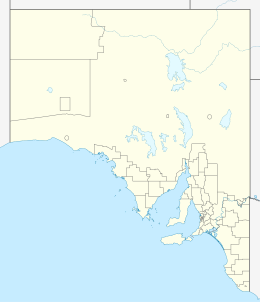Sir Joseph Banks Group
| Geography | |
|---|---|
| Location | Spencer Gulf |
| Administration | |
|
Australia
|
|
The Sir Joseph Banks Group is an archipelago of 21 small islands with a collective land area of 1,275 hectares (3,150 acres) located in Spencer Gulf about 20 kilometres (12 mi) off the eastern coast of the Eyre Peninsula in the Australian state of South Australia. Eighteen of the islands are in the Sir Joseph Banks Group Conservation Park while the surrounding waters are protected by Sir Joseph Banks Group Marine Park. It is considered to be an important seabird breeding site.
The islands are low-lying, with the highest point on Spilsby of about 50 metres (160 ft) They consist mainly of a granite base beneath limestone and are usually capped with calcrete or sandy soil. Reevesby and Spilsby are the largest islands in the group. Spilsby Island is privately owned and continues to be grazed by sheep, as well as holding a few holiday cottages.
The group consists of the following islands:
Visits to the islands are only possible by boat, with the closest mainland access point being the coastal town of Tumby Bay, 22 kilometres (14 mi) to the north-west. Some islands are not open to the general public because of their environmental sensitivity.
The islands were named by Matthew Flinders on 23 February 1802 on his voyage of exploration in HMS Investigator. The group is named after Sir Joseph Banks, who was a sponsor of the Investigator voyage. Many islands in the group are named after places in Flinders’ home county of Lincolnshire, England.
Most islands are vegetated with low shrubland dominated by nitre bush or African boxthorn. Some support tall shrubland dominated by coastal boobialla or coastal daisybush. Areas of sandy loam may support marsh saltbush. The larger islands retain patches of woodland. Islands previously used for grazing sheep have introduced grasses and burr medick.
...
Wikipedia

